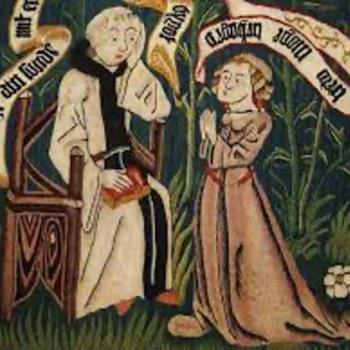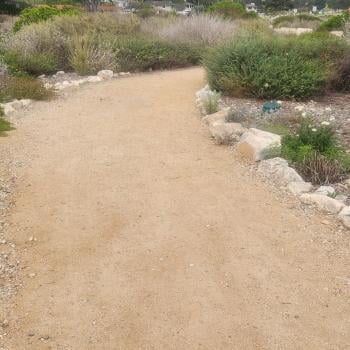The Swiss city of Solothurn is advertising for a hermit. The location is a handsome, snug hermitage nestled in rock over St. Verena gorge. Job qualifications: must be outgoing, good with people, willing to dispense wisdom to passersby. A winsome Wall Street Journal piece this Thursday broadcast the opening to an even broader pool, though the town already has received plenty of applications.
Maybe we are meant to snicker here, since a hermit, by definition, is someone who wants to avoid seeing people. But people want to see hermits: Solothurn’s last holder of the post left, frustrated by constant visits from tourists.
What did you go out to see? Jesus demanded of gazers at John the Baptist: What? A reed shaken by the wind? It was common in early centuries of Christianity for some to withdraw to the desert, literally or figuratively, to devote lives to prayer, fasting, and solitude. Desert mothers and fathers followed paths of individual prayer, but also attracted visitors who sought them out for wisdom or intercession.
Lest this seem strange, recall that it was long a fashion of Europe’s wealthy and well-born to have a hermit on the premises. In principle, the hermit was supposed to pray for the family—not unlike the practice of making donations to monasteries with expectation that monks and nuns pray for donor families or the dead—while the employer offered living space and the basic, if bare, necessities of survival. There were worldly benefits too, as a hermit could lend a certain gravitas or add an appealing rusticity to an aristocratic family’s estate.
University of Leicester historian Gordon Campbell describes this charm as a feature of garden design. Not only Swiss towns like Solothurn but European landowners would advertise for a hermit, promising austere living conditions, even bans on hermits’ washing of hair or cutting fingernails. As Campbell puts it, a landowner might nominate one of his tenants to function as the hermit, saying something like this: “I want you to be my ornamental hermit. Here is your druid costume.”
Even Switzerland’s patron saint, Saint Nicholas of Flüe (1417-1487), was a hermit. Born in a farming family, he spent his young adulthood as a soldier and returned to marry. His wife bore 10 children. In 1467 he left his wife and children to live in seclusion in nearby Ranft. (The Swiss friend who first told me this story wished to emphasize that his wife consented to his new vocation.) He spent the remainder of his days as a hermit, reportedly taking no nourishment but the eucharist for years, interceding in disputes among cantons to help along the 1481 Diet of Stans.
The last occupant of the Solothurn post was a woman. Nothing strange about that: living in consecrated seclusion long has been an acceptable route for women who could not or did not wish either to marry or enter a convent. In fact, some substantial convents grew out of eremitic foundations, like one illustrious convent of Renaissance Florence, Le Murate, which traced its origins to the decision of several women to wall themselves in, first in a bridge on the Arno, for a life of solitude and prayer. (The Napoleonic wars rendered it a prison. Now it is a café.)
Of course, today men and women withdraw from civilization for reasons other than the religious. Here in America, even if we steer the mind away from Unabomber caricatures, we might think of that sort-of hermit Henry David Thoreau, or puzzle that our most famous building named “The Hermitage” is not, as in Russia, an art museum but the old estate of Andrew Jackson. Still, religious motivations seem to stay tied to the idea of the hermit: people distrust a mere recluse, a misanthrope, but endorse withdrawal from the world for some good reason, as a way to connect to nature or get wisdom or bestow blessing on those left behind.
The Solothurn hermit job actually is not that strange. It is a kind of lay pastoral position adapted for our times. As the Wall Street Journal article notes, “[t]ourists can easily reach once-secluded spots” and now those visitors include “strangers looking for advice on how to navigate life’s challenges.” A residual respect for this Christian office makes pilgrims out of sightseers, who tote their human needs to the hermit.
I hope Solothurn gets a good one.












